The kacapi, a traditional zither of the Sundanese people in Indonesia
The kacapi (Sundanese: ᮊᮎᮕᮤ) is a traditional zither of Sundanese people in Indonesia. This musical instrument is similar to Chinese guzheng, Japanese koto, the Mongolian yatga, the Korean gayageum, the Vietnamese đàn tranh and the Kazakh jetigen. The kacapi played as the main accompanying instrument in the Tembang Sunda or Mamaos Cianjuran, kacapi suling (tembang Sunda without vocal accompaniment) genre (called kecapi seruling in Indonesian), pantun stories recitation or an additional instrument in Gamelan Degung performance.
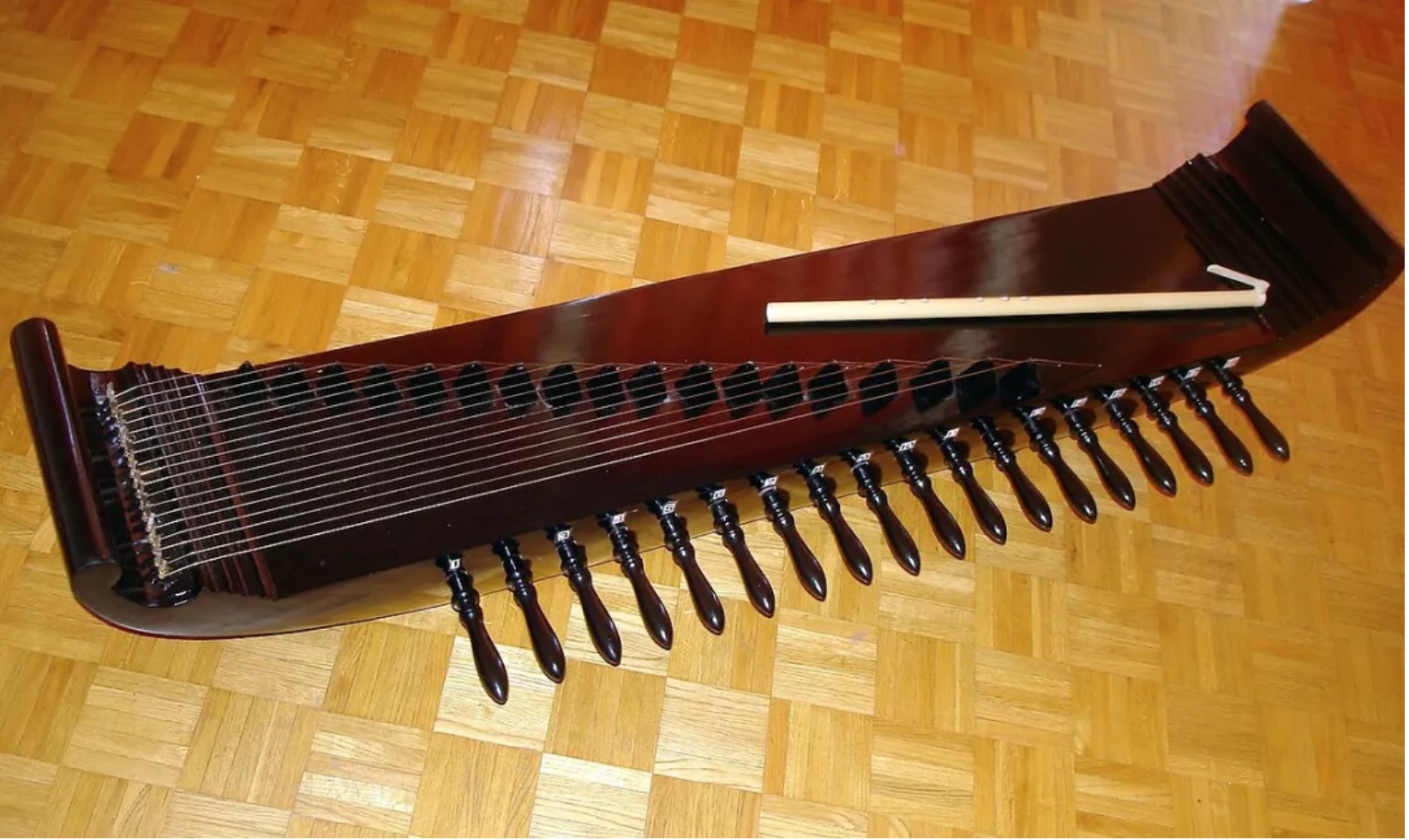
The word kacapi in Sundanese also refers to santol tree, from which initially the wood is believed to be used for building the zither instrument.According to its form or physical appearance, there are two kinds of kacapis:Kacapi Parahu (=Boat Kacapi) or Kacapi Gelung; and Kacapi Siter
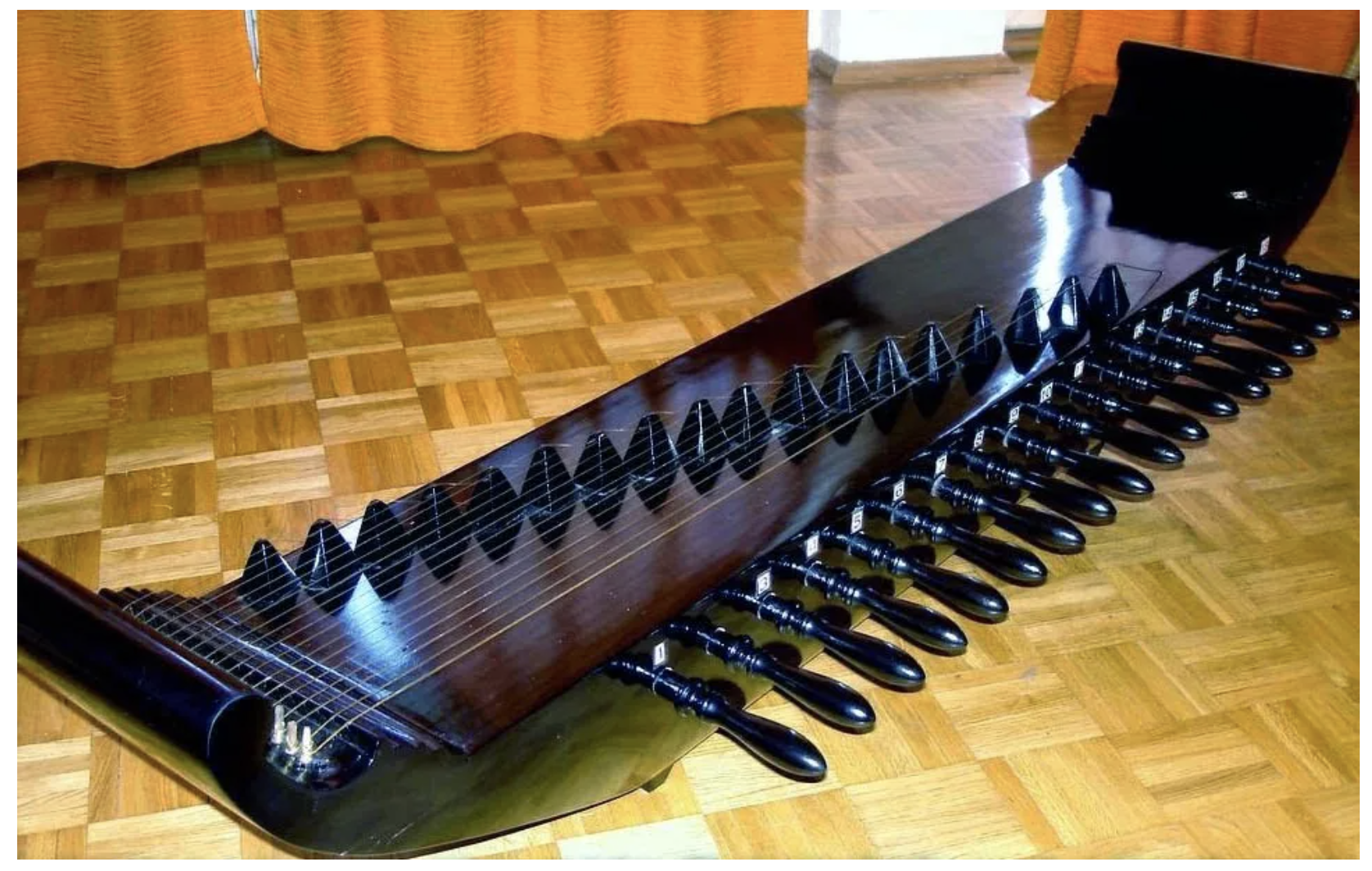
The Kacapi Parahu is a resonance box with an uncovered underside to allow the sound out. The sides of this kind of kacapi are tapered inward from top to bottom, which gives the instrument a boat-like shape. In ancient times, it was made directly from solid wood by perforating it.
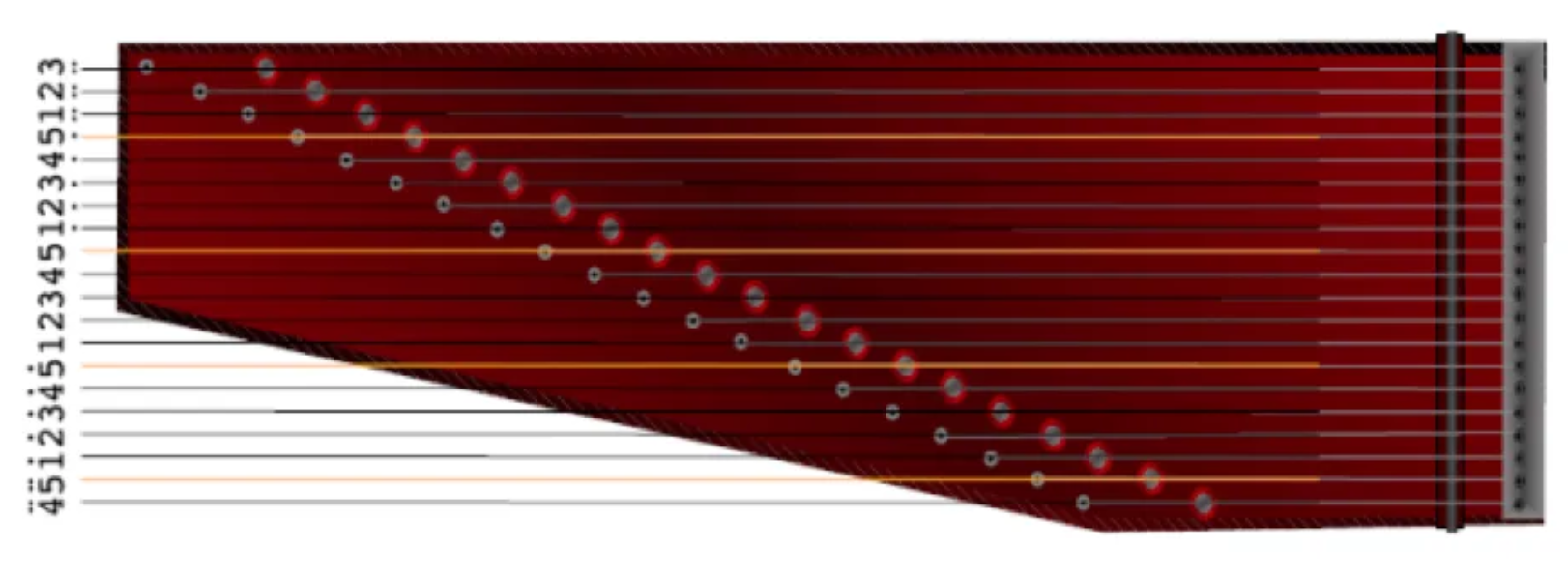
The Kacapi siter is a plan-parallel resonance box. Similar to the kacapi parahu, its hole is located at the bottom. The upper and bottom sides of it form a trapezium-like shape.For both kinds of kacapi, each string is affixed to a small screw or peg on the top right-hand side of the box. They can be tuned in different systems: pelog, sorog/madenda, or slendro.
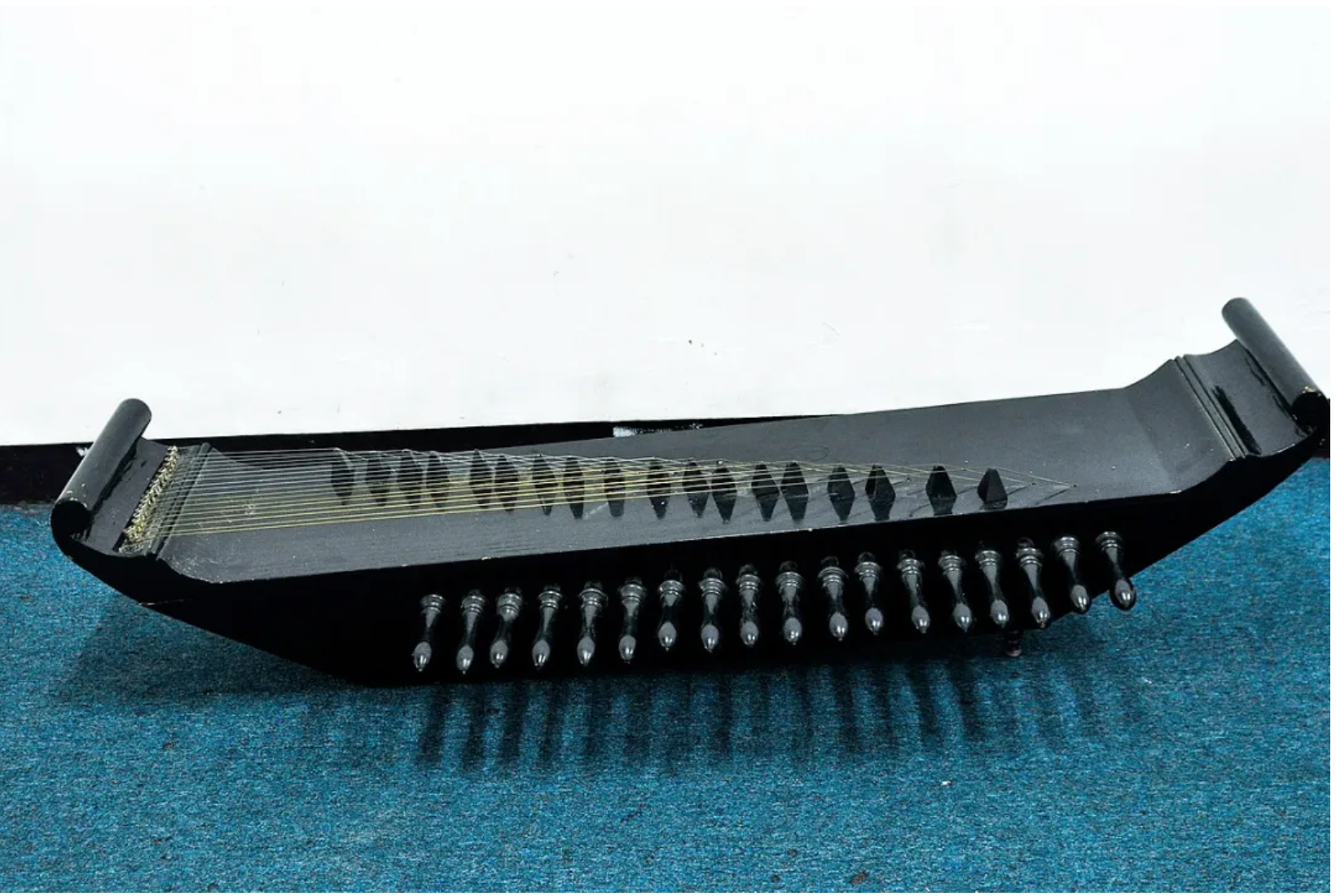
Nowadays, the resonance box of kacapi is made by gluing six wood-plates side by side.The kacapi is traditionally played by sitting cross-legged on the floor. Thus, the strings are about 25 cm above the floor. Nowadays the kacapi is sometimes placed on a wooden frame, so that the player can sit on a chair.
If the kacapi indung is played while sitting on the floor, usually a pillow or some other small object is placed under its left-hand side, as seen from the player, so that the sound can freely escape through the resonance hole in the bottom of the soundbox. Some kecapi are fitted with small feet, so that it is not necessary to lift them in this way.
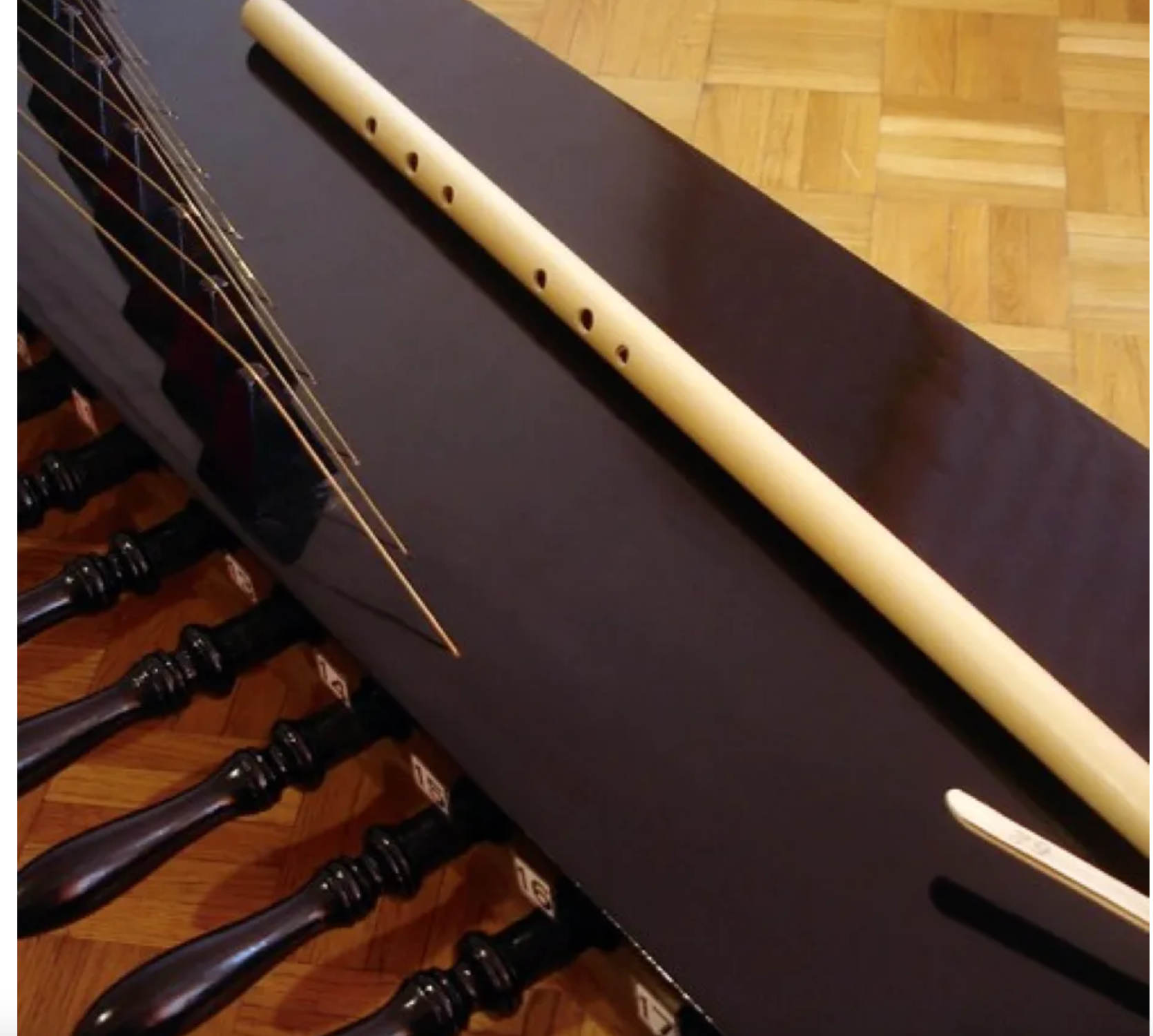
It is not certain how long the kacapi has been used to accompany the recitation of pantun stories. In the Sundanese dictionary published by the Lembaga Basa & Sastra Sunda (1976) the primary meaning of the word pantun is given as kacapi. This may be an indication that the relation between the kacapi and the recitation of pantun stories is an old one. Eringa (1949:3) points to the proverb "kawas pantun teu jeung kacapi", 'like a pantun(-singer) without a kacapi', used of someone who likes to give other people advice but who does not himself practise what he preaches. This proverb, according to Eringa, indicates that the kacapi is the Standard instrument for accompanying a pantun recitation. The Baduy Sundanese of Banten Province still make exclusive use of the kacapi to accompany their pantun stories.
Music creation experience combined with Songdio AI While making and playing the instrument, make some music with Songdio AI to add some fun to your musical life. Songdio AI is a platform that generates music through artificial intelligence, with simplified steps that make it easy for users to create unique music. Users can edit, personalize their work, and generate copyright-free music for different projects and videos, as well as publish it across platforms and receive full royalty revenue.
With Songdio AI, users can:
Discover music: Discover popular music, latest music and random songs that everyone is listening to in Songdio-AI music player to meet users’ needs for different types of music.
Create music: Create your own music with Songdio-AI music player, have fun creating music, and put your creative ideas into practice.
Recently played: Songdio-AI music player can record the user’s recently played songs, making it easy for users to review their favorite music at any time.
Private playlists: Users can create their favorite music playlists, categorize and bookmark according to different moods and scenes.